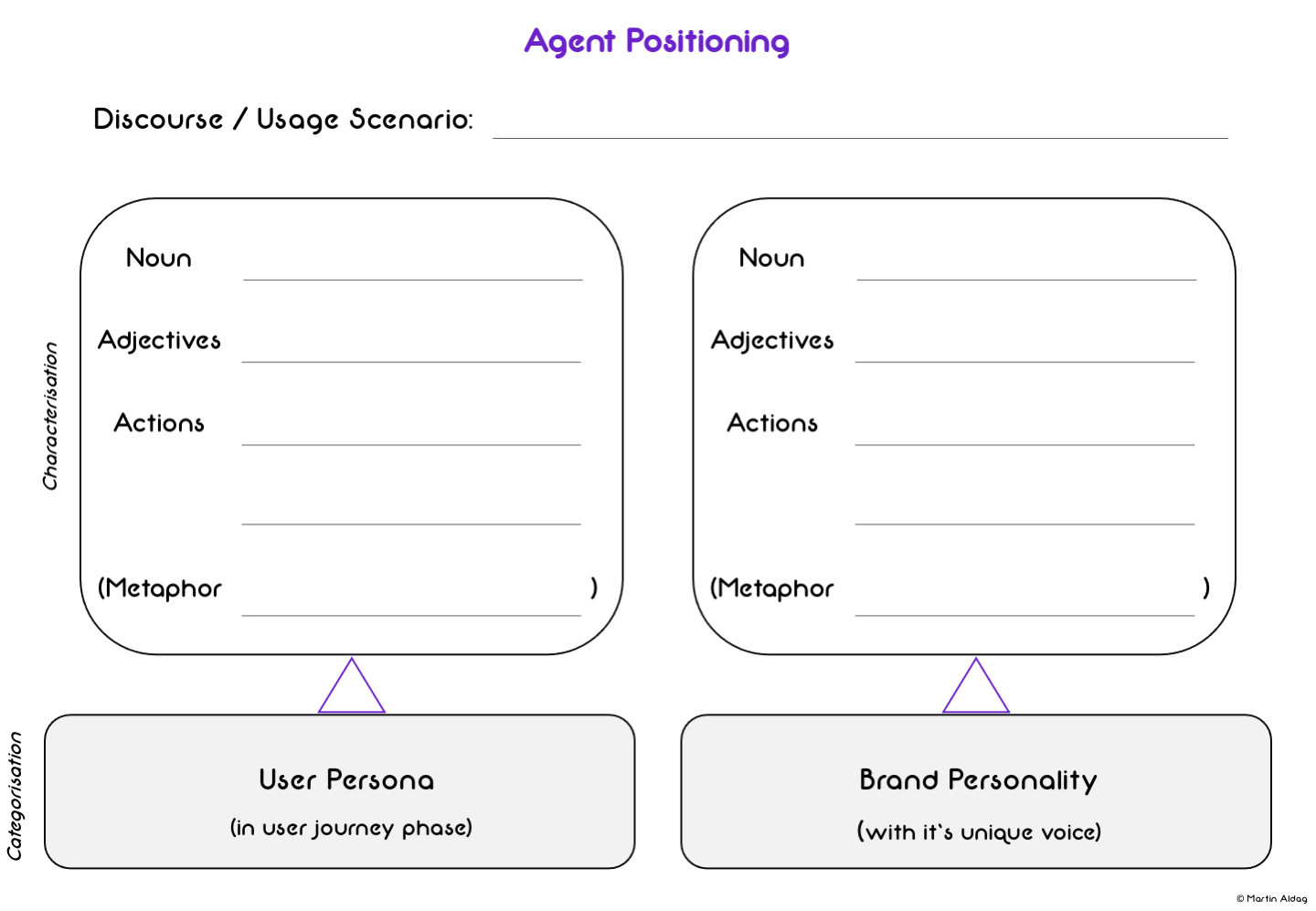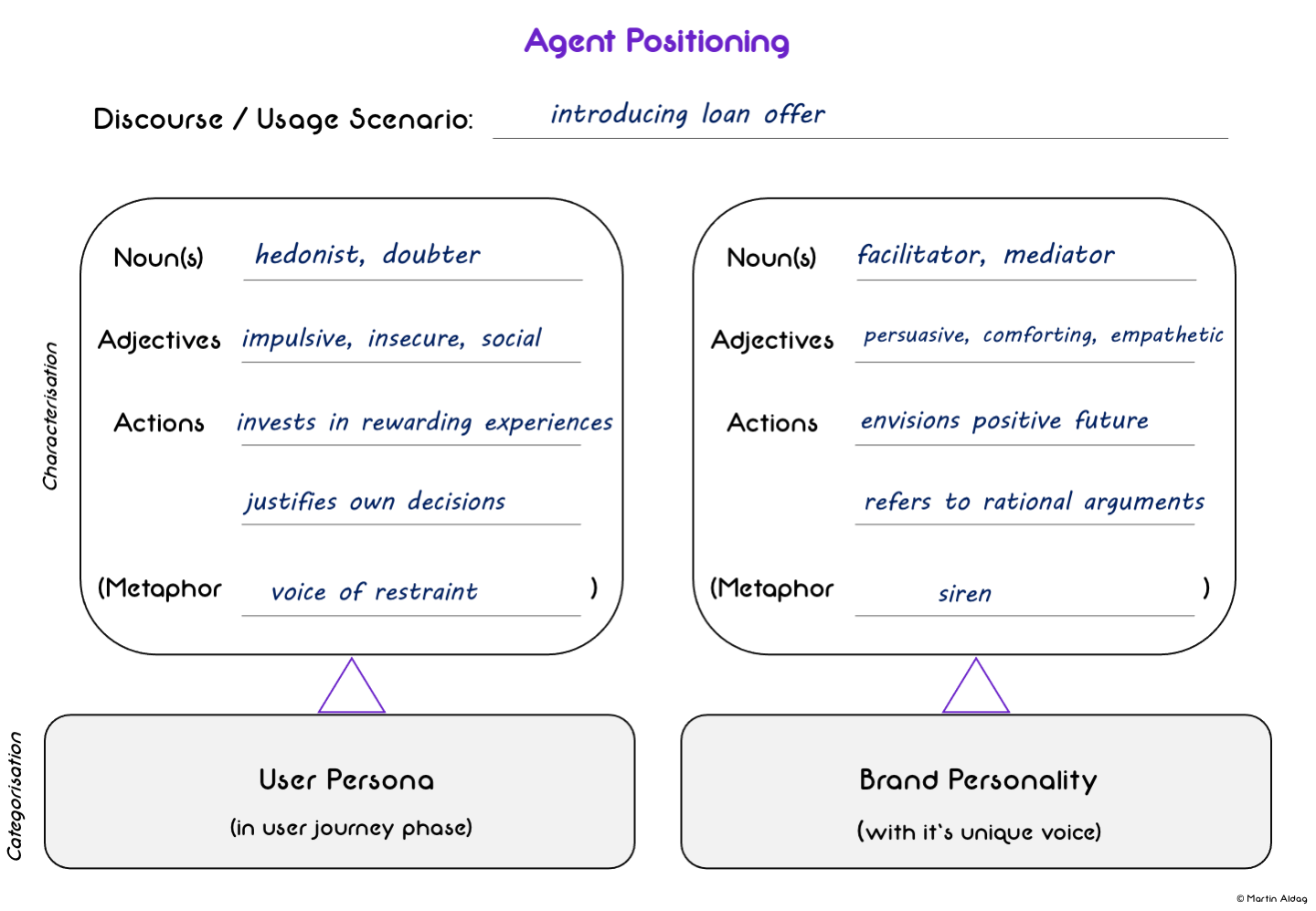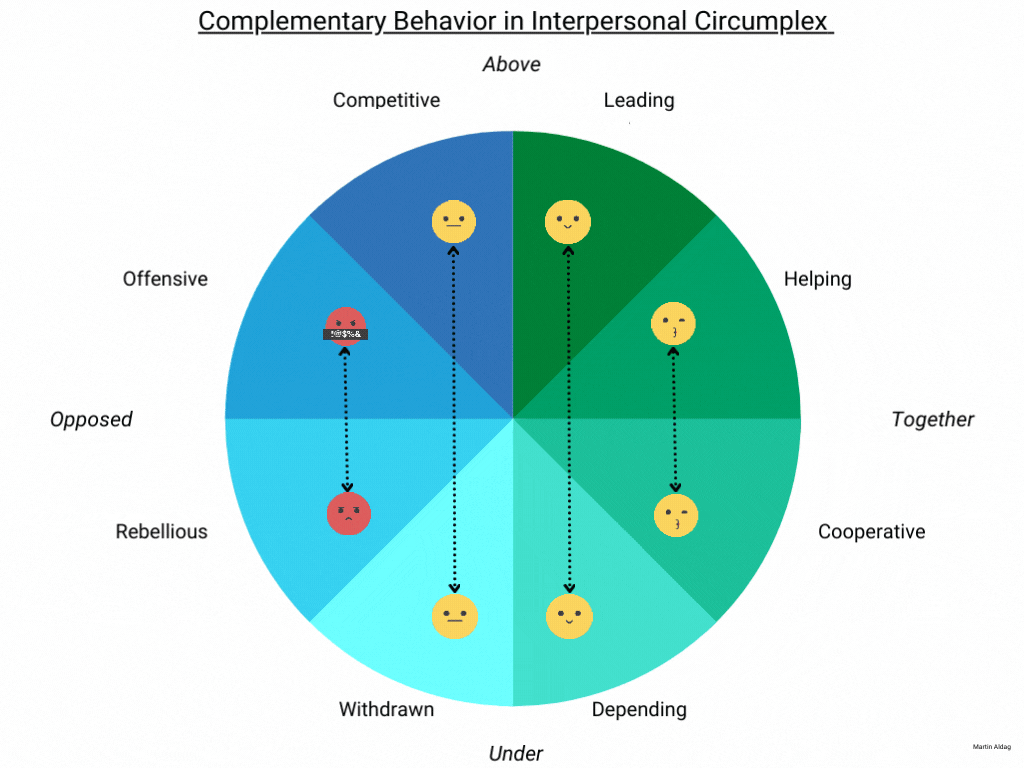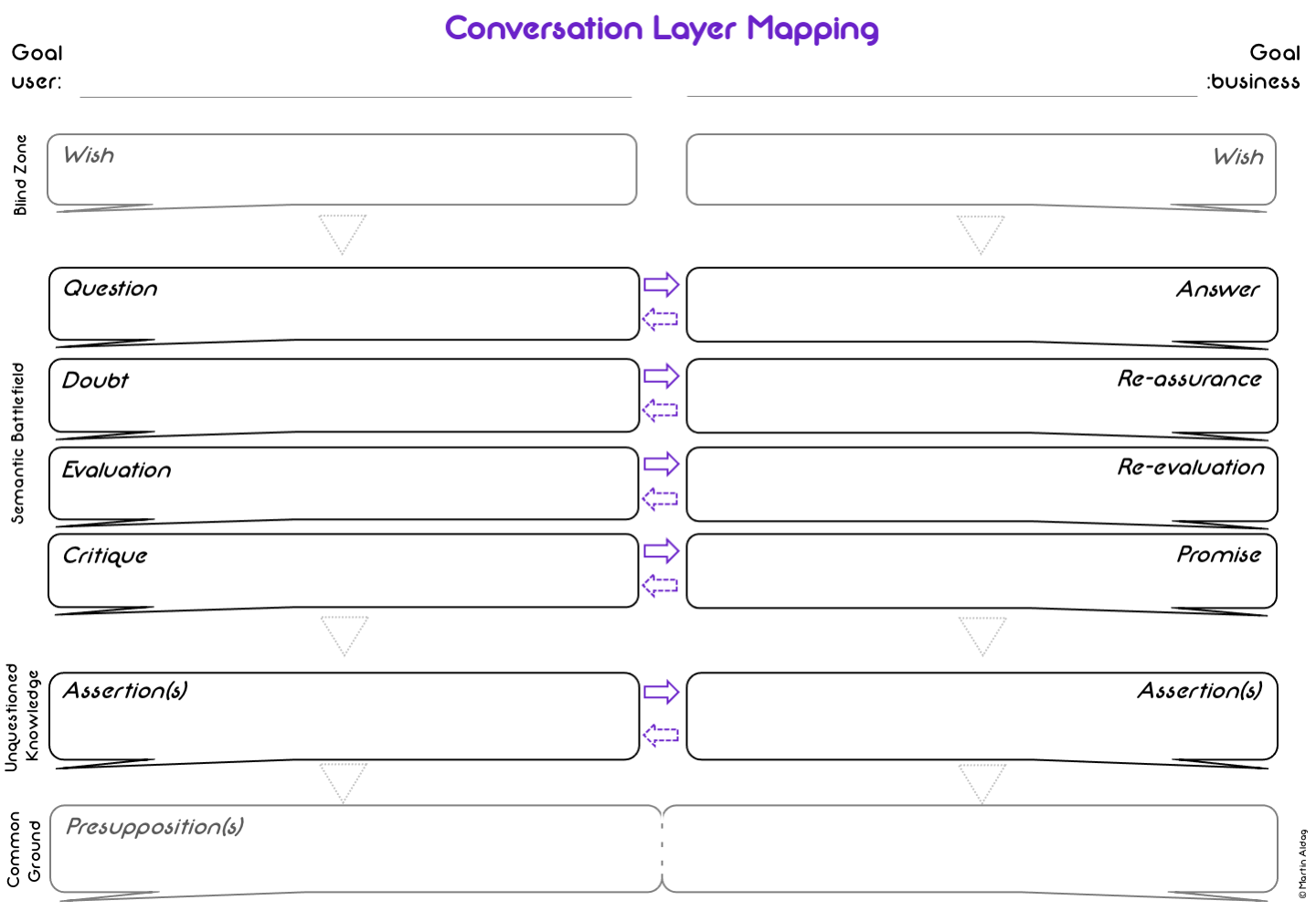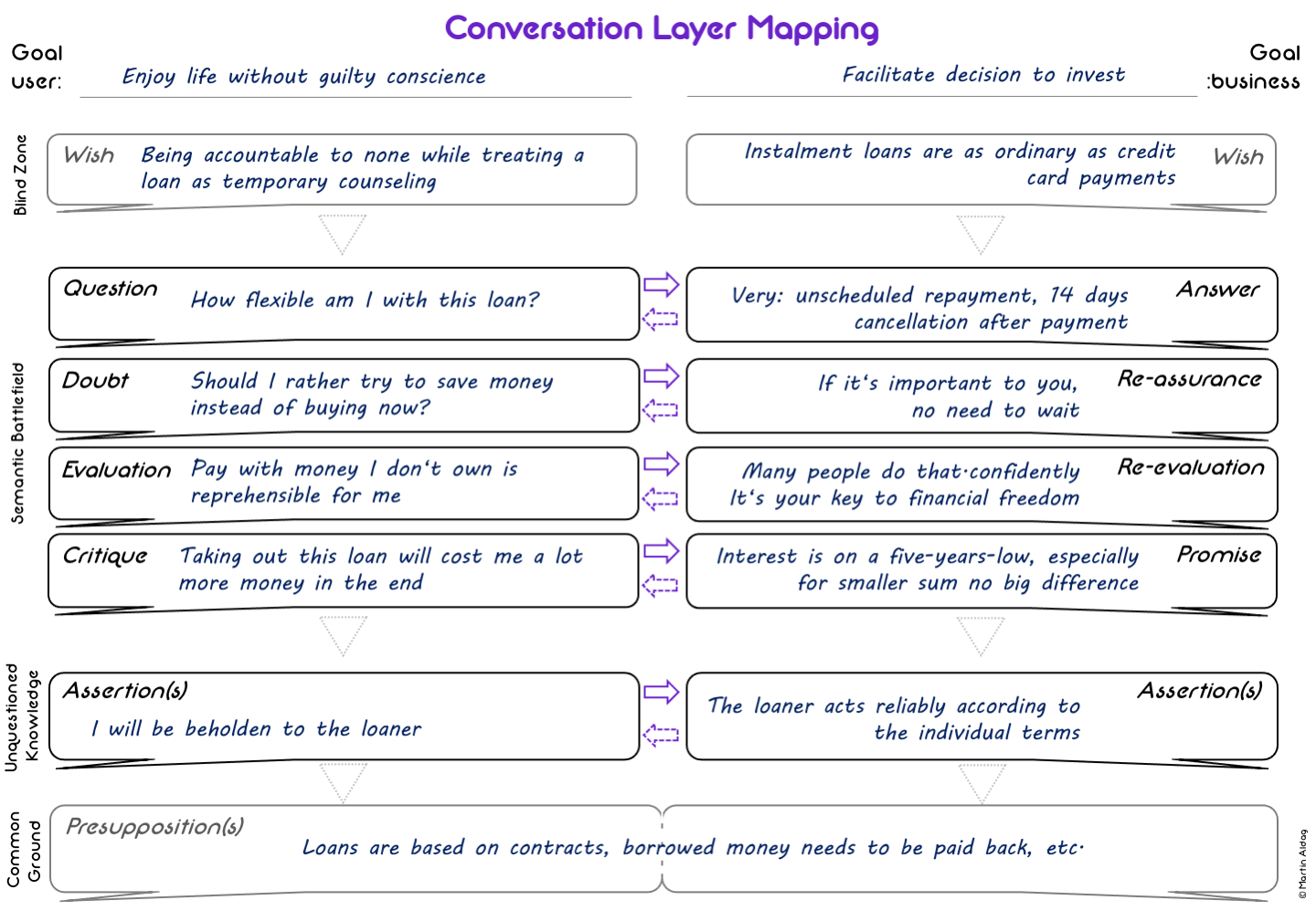Linguistics for UX writing (Part I) - How to effectively construct meaning & purpose through a core conversation
While UX writing is further establishing itself at an increasing pace (yeah!), there are still many UX teams out there that have not yet established a designated UX Writer role. Those who start to consider it on the one hand feel some kind of limitations that they want to overcome and on the other hand, don’t want to fall behind the competition. In my experience they are especially searching for two things: first, to maintain a high-quality product with consistent, clear & involving short-/microcopy, and second, to get support answering the question “We have some goal – but how shall we realize it through communication?”. The first refers to the rather surface level, whereas the latter addresses the UX content strategy.
UX writing strategy facilitates content-first UX design
I think, when operating on a high level the UX Writer doesn’t have to come up with a unique idea or a “better” solution than the UX Designer. Because this early phase of the design process is mostly about psychology: understanding the user’s (and other stakeholders’) needs and planning your reactions to them. What UX Writers can do is facilitate a content-first design and contribute their personal perspective to the discussion with e.g. the UX Designer, Product Owner & UX Researcher. With this article, I want to add some instruments you can use to implement a user-centered, content-first design.
Discourse analysis explores language in its social context and how knowledge & values are constituted by and are constituting social actions. Therefore, the focus is on the meaning & purpose of written/spoken, monologic/dialogical structures. Different approaches can be applied to pursue that goal, e.g. cognitive psychology, interactive sociolinguistics, pragmatics & conversation analysis.
Discourse analysis offers the resources to form a meaningful relationship with the user
When setting the UX Writing strategy we do exactly that. We want to find a way to connect with the user in a specific context while establishing new knowledge, influencing attitudes & giving reason to take action. To know the methods for the analysis also means, to be capable of using them to actually create a reflective discourse. Here you go!
Before we even start to talk about the content, we need to establish the participants who exchange about that content. Metaphorically speaking, it’s about positioning oneself and others inside the social room. If you do that strategically, you can influence the opportunity for action. This process is done via nominalization, how an agent is labeled, and predication, how positive or negative attributes are attached to those agents.
The categorization of agents is often already done in the form of user personas and brand personality/voice. How they shall be characterized depends more on the specific communication scenario though. Regarding the user, this too should mainly be derived from additional research data. However, you generally will not just represent the “reality” but your perspective on it. E.g. if you frame the user as skeptical instead of just reserved it could mean that you need to invest more into argumentation than just sparkling some motivational triggers which also reflect back on the information & actions that the user will perceive and how he/she feels addressed & represented.
Positioning the agents of a specific discourse will reflect on the opportunity for action
In practice, you will do that with nouns, especially those conveying a connotation (e.g. charmer, guardian, eyebrow-raiser, hack), adjectives (e.g. helpful, committed, intellectual, shy), descriptions of typical actions (e.g. the first to try new things, avoids conflicts, does not apologize for his/her needs), and metaphors (e.g. mental wreck, tower of strength, light-hearted).
A crucial principle for achieving mutual understanding and the desired impact on the other is recipient design. It means that during oral exchange each participant will to some extent orientate on the fly to the dialog partner on every linguistic & paralinguistic level, e.g. speaking rate, politeness level, and sociolect, whereas in textual / computer-mediated communication the recipient design has to be strategically planned in advance.
In regard to the content level the following aspects are especially helpful:
- finding similarities with the opinion of the other
- adapt explanations to the competence of the other
- align the argumentation to the perspective of the other
- answer in a way that is assumed to be wished-for
Pacifying the semantic battle with strategic recipient design
When forming a discourse with the user you are in a negotiation process of how to co-construct the world and what to accept as “normal”, “right”, “reasonable” & “good”. For knowledge to become “normal” it usually is transferred through the following layers from top to bottom:
- Blind zone
(utopistic, unrealistic, non-debatable) - Semantic battle zone
(dispute about knowledge & truth via argumentation & evaluation) - Unquestioned knowledge
(frames & scripts generating claims & stereotypes) - Common sense
(self-evident naturalness that is not explicitly mentioned)
Quite often UX writing will focus on the semantic battle zone. There you can map your most important, goal-related insights onto functional sequences (“adjacency pairs”) that are typical for non-congruent knowledge levels/attitudes: question-answer, evaluation-re-evaluation, doubt-re-assurance, critique-promise, problem identification-solution proposal, etc. (See also The automation of persuasive dialog). This conversation-first design will illustrate how the brand would immediately react to the user’s perspective – it could hardly be more user-centered!
It’s also worth mapping out the other layers though, e.g. for the topic planning: do the user and the brand have some utopias in common, and can the brand make wishful thinking come true in the future? What frames should you activate, what would not be perceived as a valid claim, or which claim could you successfully present as fact? What is the common ground you can build on that allows you to consciously leave topics out and use implications & allusions?
After you have built your core conversation you can focus on different aspects to further develop the discourse:
- Action plan
(Define correlated partial goals that need to be addressed to go from a status quo to the desired status change) - Topic structure
(Separate the main topic(s) from supporting topics and map out their respective relations)- Storytelling
(Transform the core conversation into a coherent narrative structure to involve the user on the emotional level) - Argumentation
(Apply further argumentative strategies to justify your evaluations and increase your persuasive force) - Explanations & descriptions
(Add & elaborate details that help to establish knowledge in alignment with the purpose of your discourse management)
- Storytelling
- Dialog flow
(Expand the base sequences into a complete dialog flow while further integrating real or anticipated user reactions. A rehearsal talk could be taken as an origin to add even more naturality) - Metaphor complex
(Can you facilitate the understanding of your intentions through a metaphor that has implications for each agent and their actions? E.g. “safe haven” indicates that someone offers security for another one who is seeking to escape trouble.)

